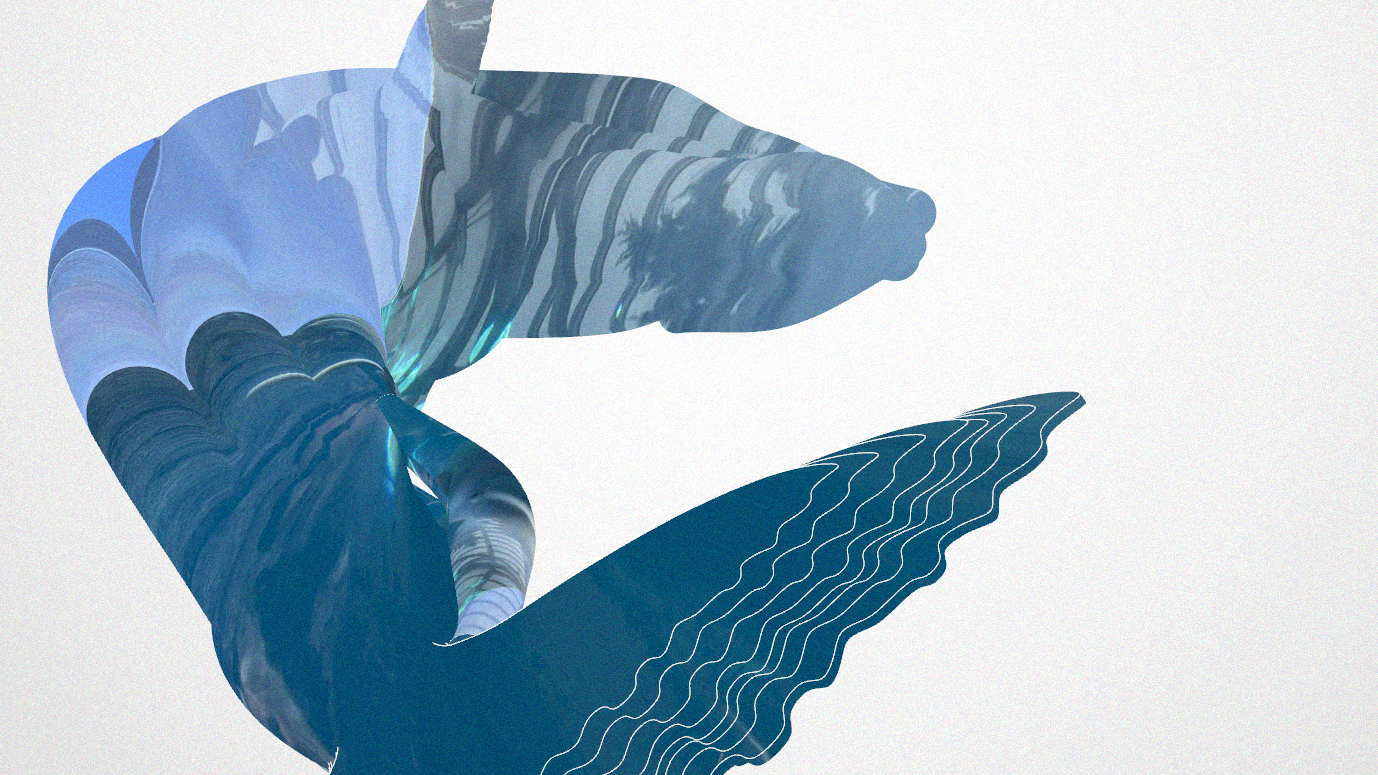

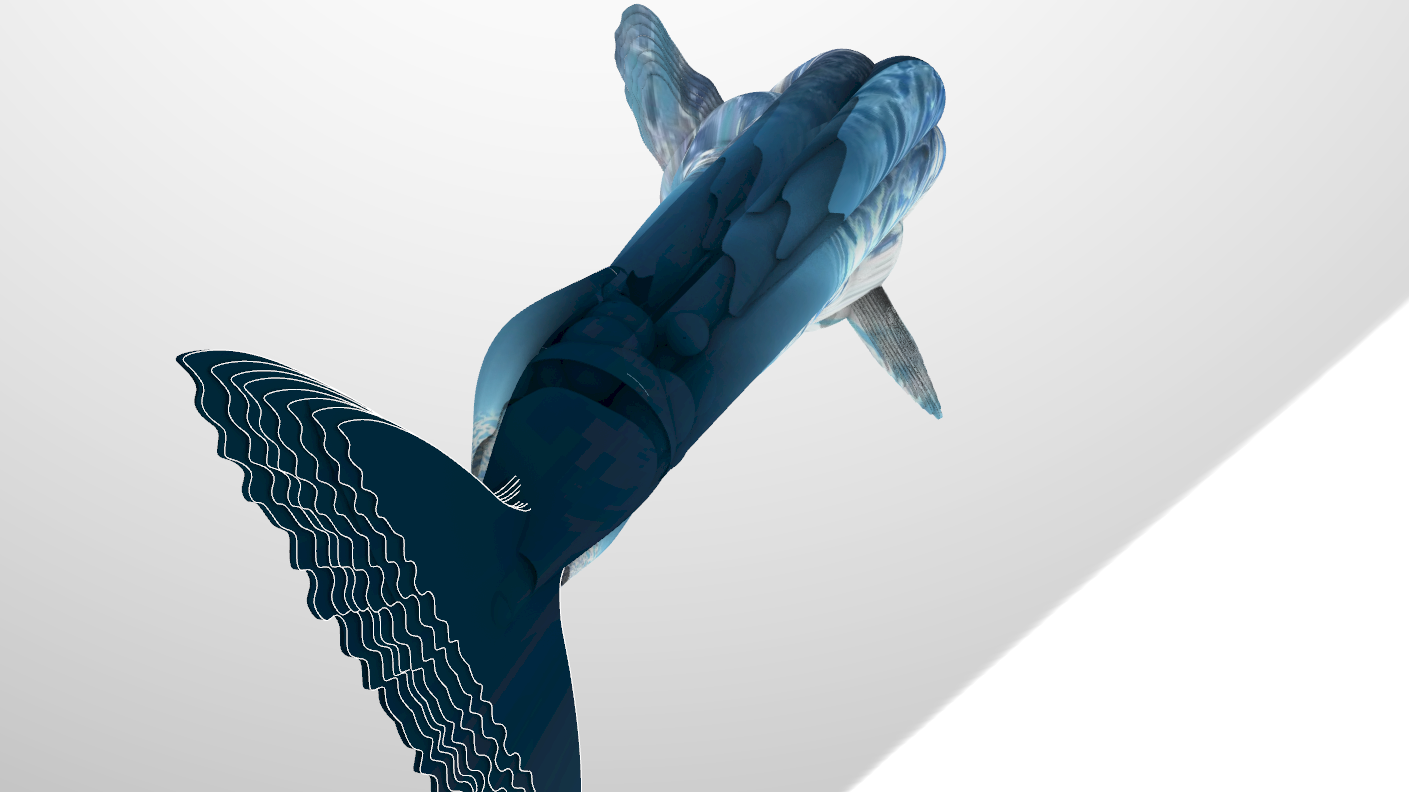


For this project, we were tasked with developing a 3D model of a creature at an aquarium. We explored the range of marine life available, chose a creature we wanted to model, and took notes and sketched small details to build a high-fidelity CAD model. To depict the creature, I chose a layered, balloon-like sculptural aesthetic that allowed me to express my sensitivities and subjectivity in relationship to the reality we observe. I observed all the small details that made this whale so distinctive and amusing, and I used these notes in building this model.
Process
(1) I started by observing the Beluga whale and taking photos, doing sketches, and writing down traits I could consider when building my model.
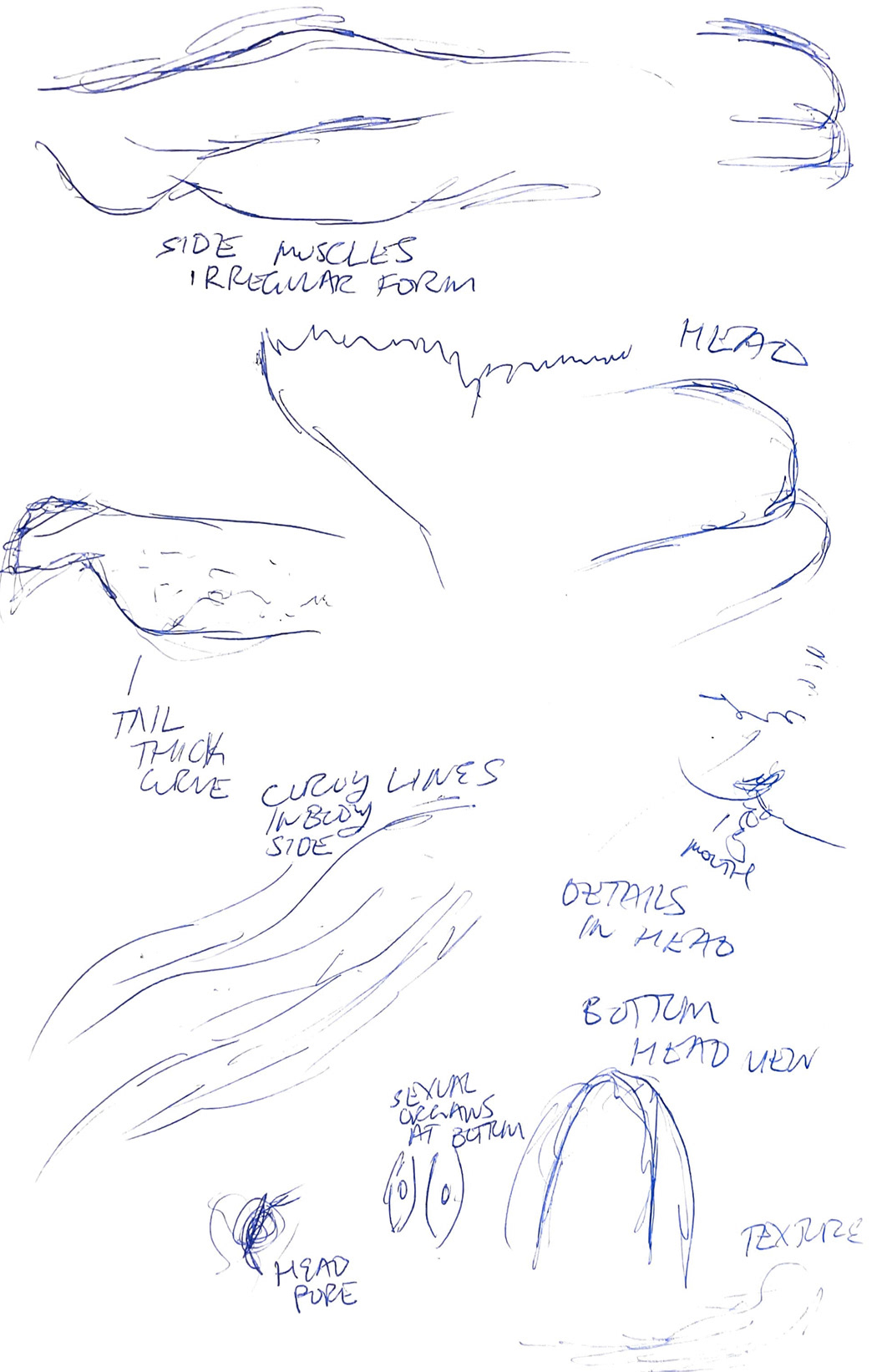
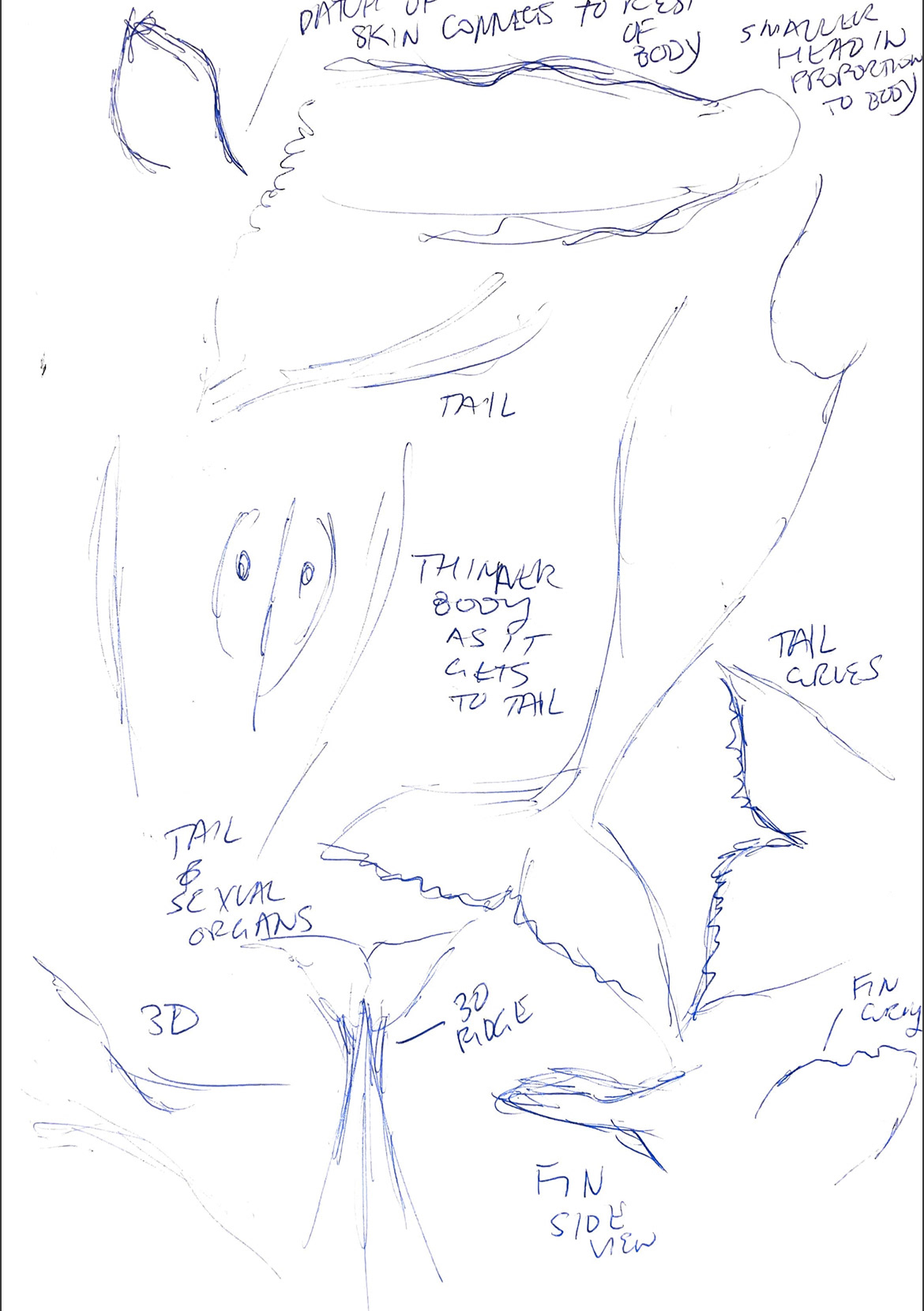
(2) I learned that by taking photos, I could perceive other qualities such as the reflection of the water on the whale's skin, specific textures on the body, and useful reference for modeling.
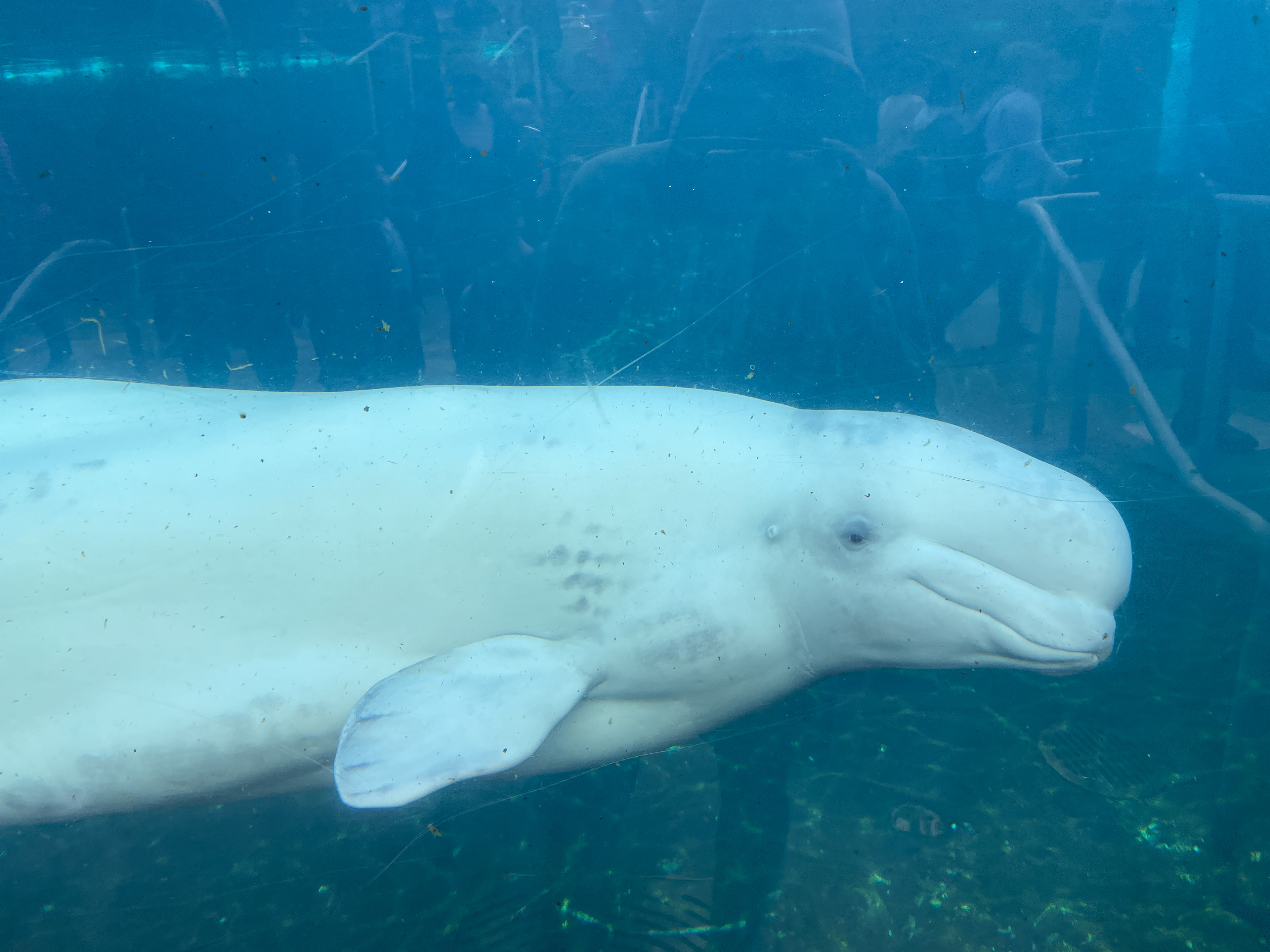
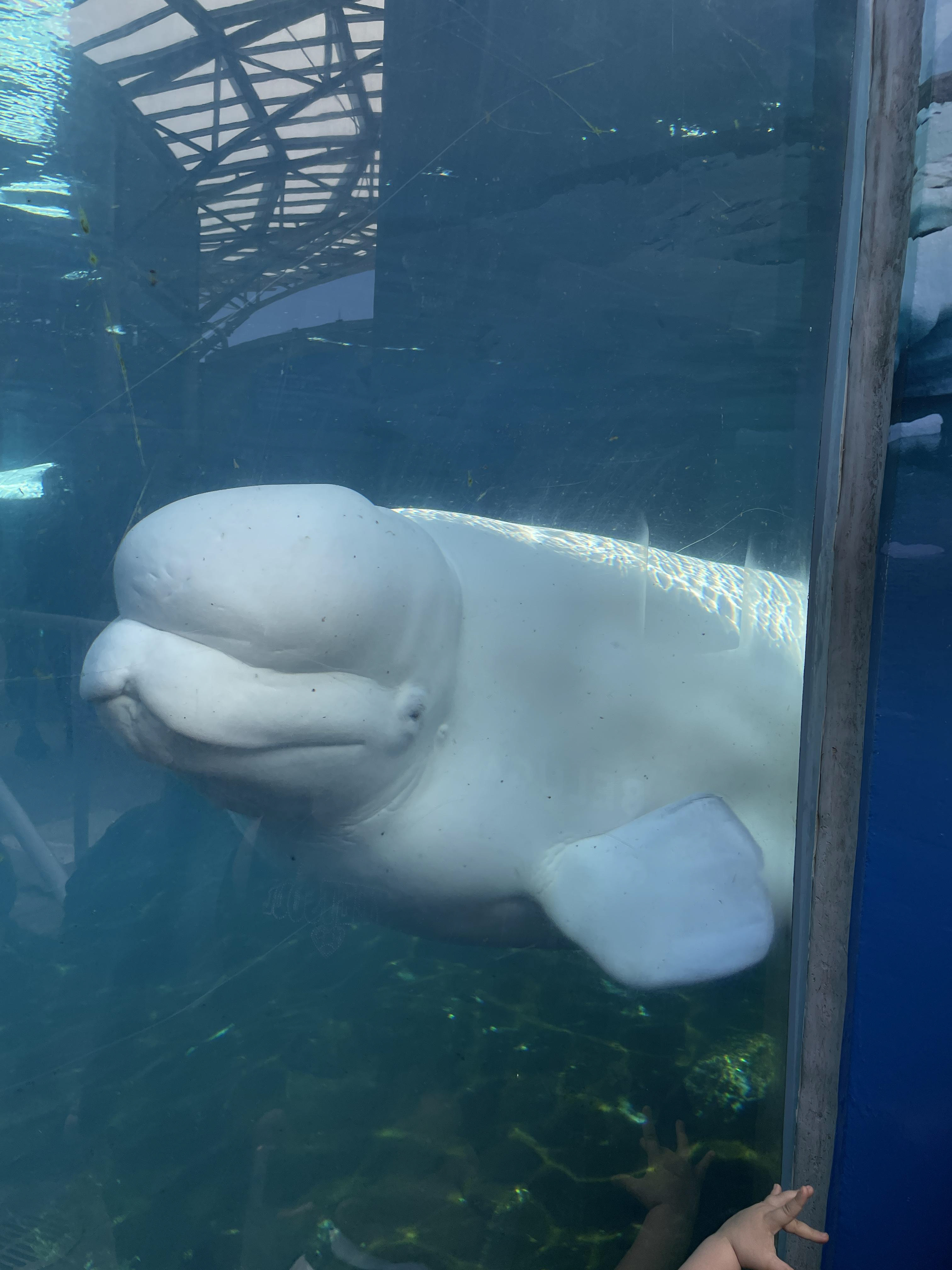

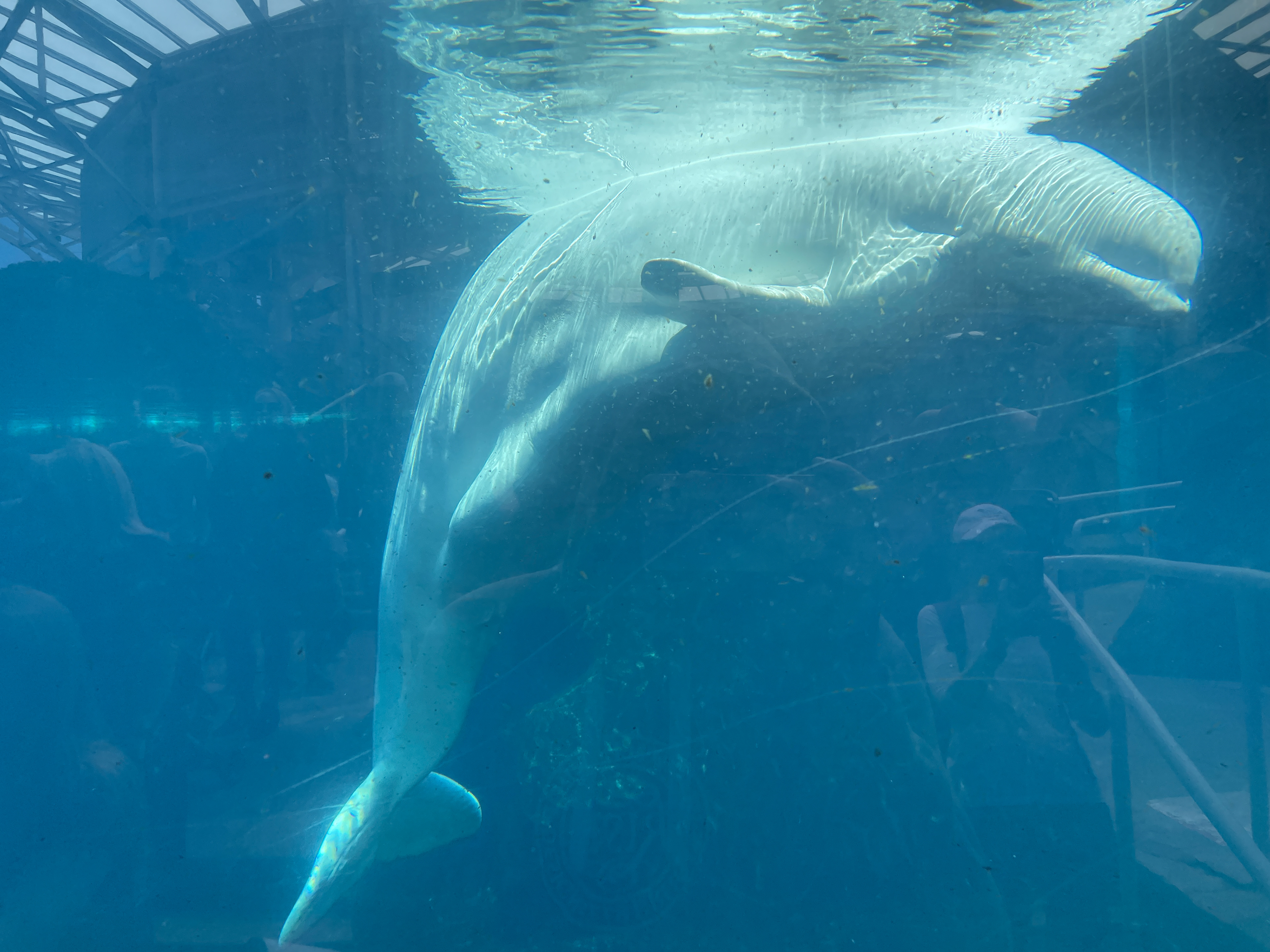
(3) I began my model by inserting the images as reference in different views to be able to loft and build the shape of the body, tail, and head.
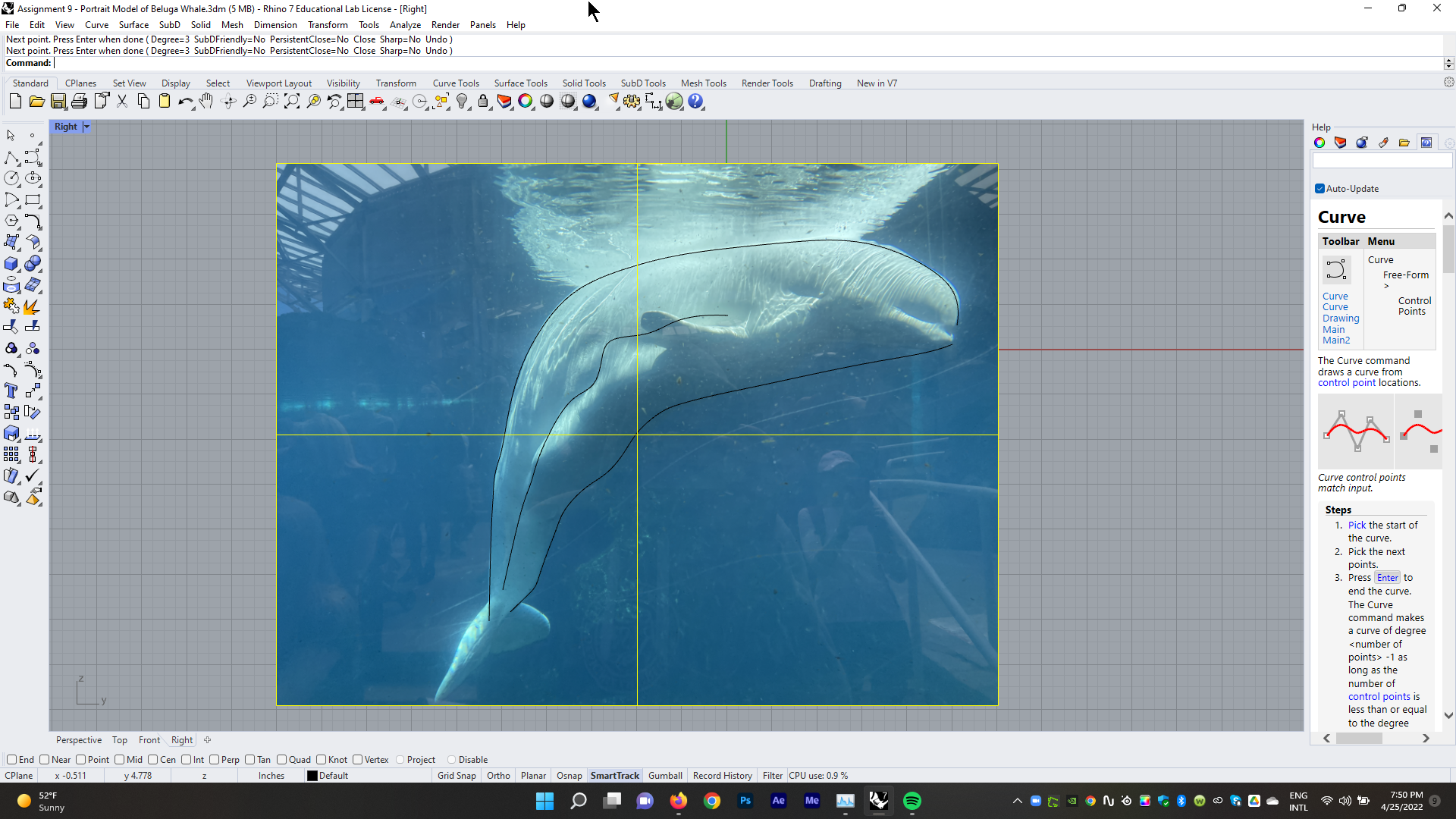
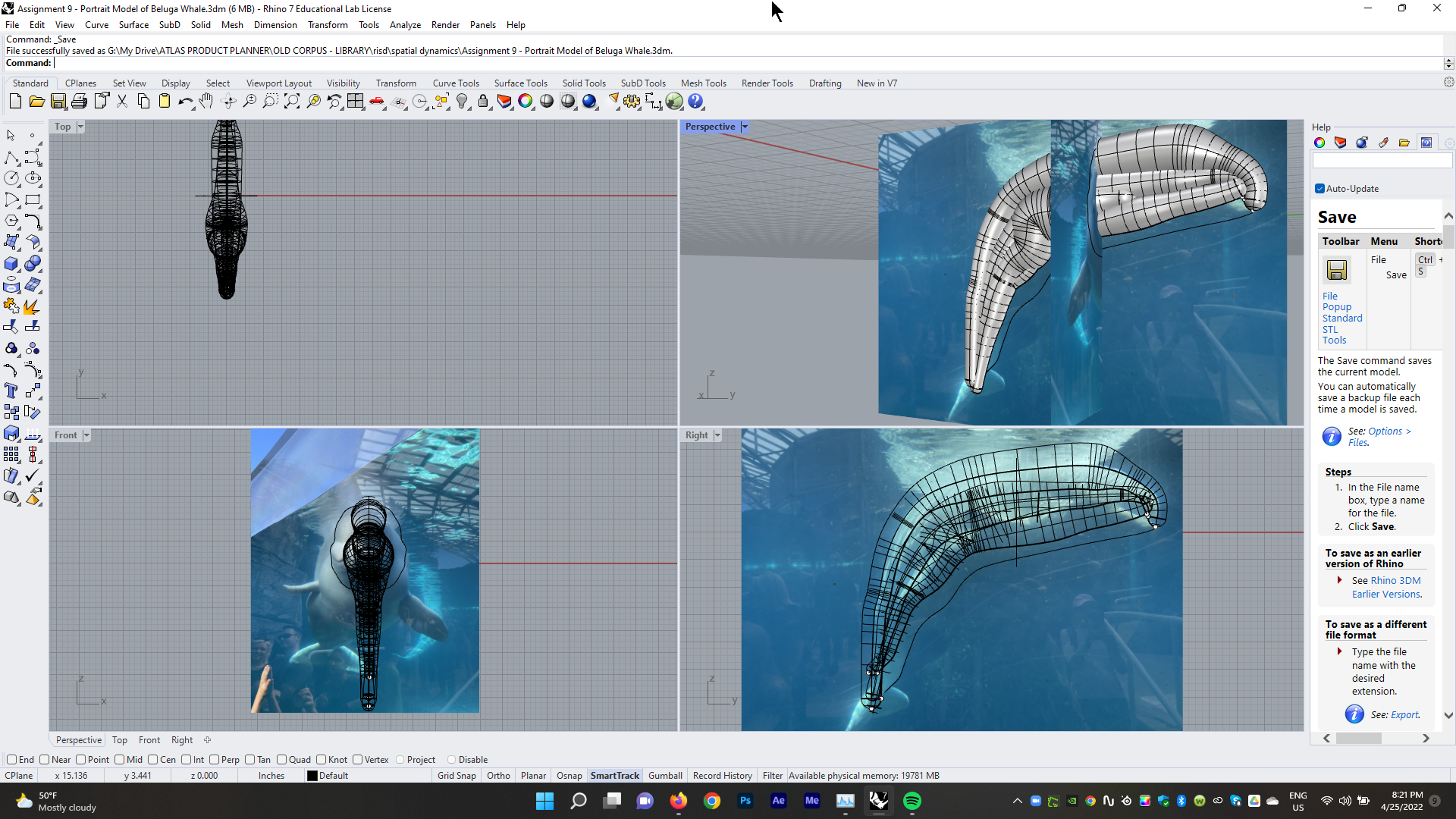

(4) I continued modeling and exploring ways parts would intersect, connect, and come together as a whole. The relationships between the parts made me learn about the complex yet simple anatomy of wildlife.

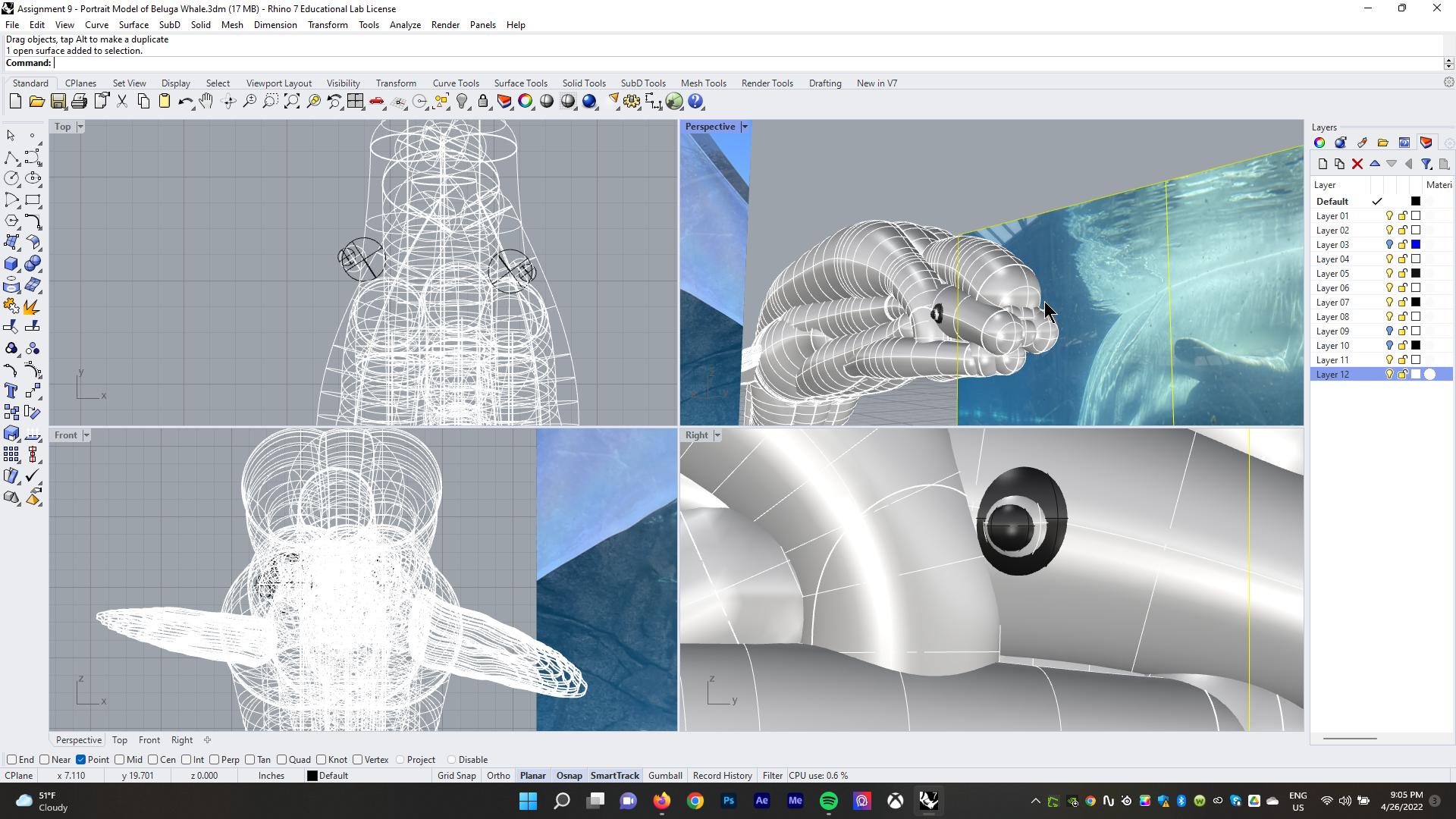
(5) I kept referencing my sketches and photos to add the details that would ultimately make this model more realistic and express the qualities I was impressed by when I saw the whale in person.
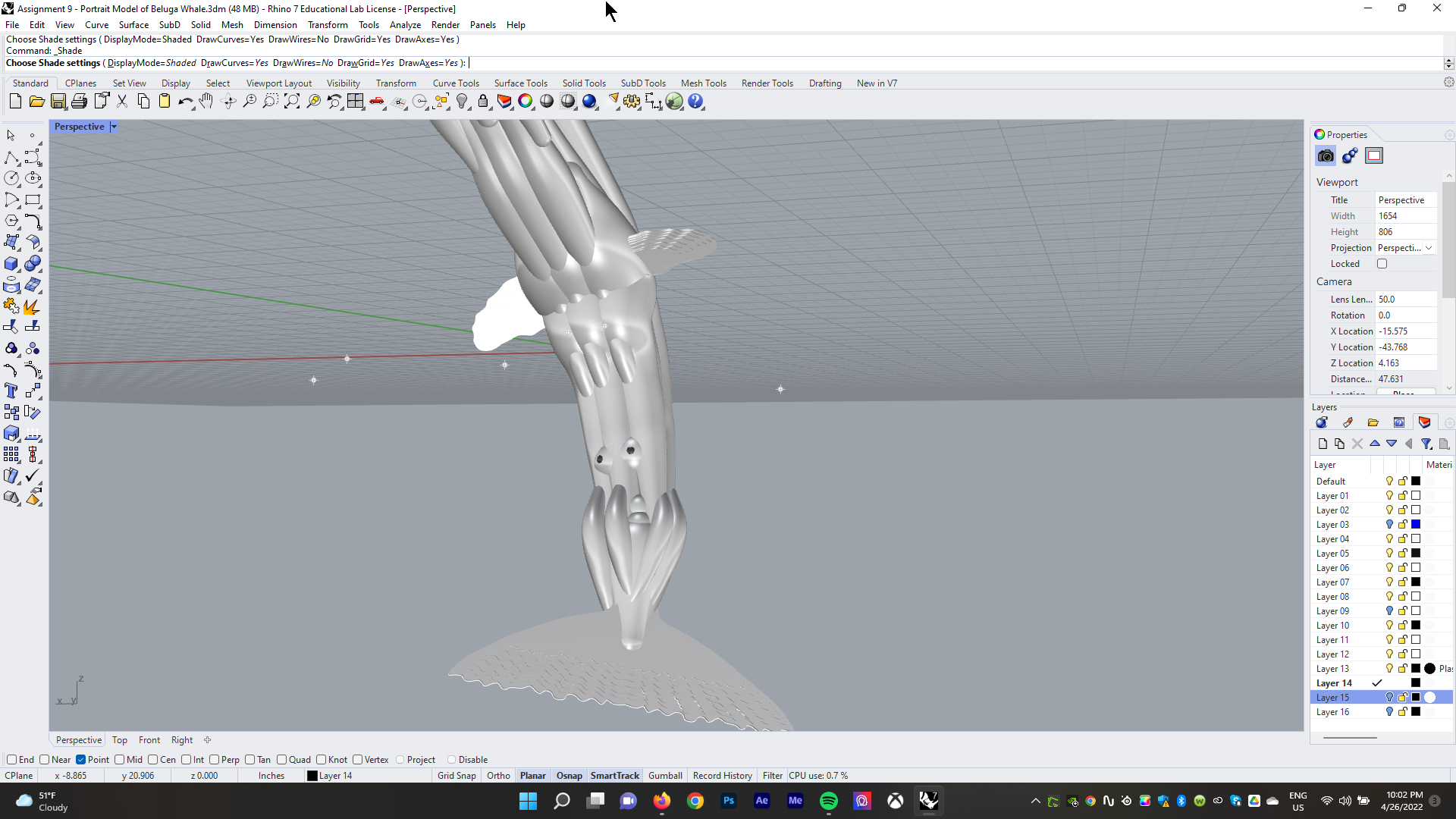
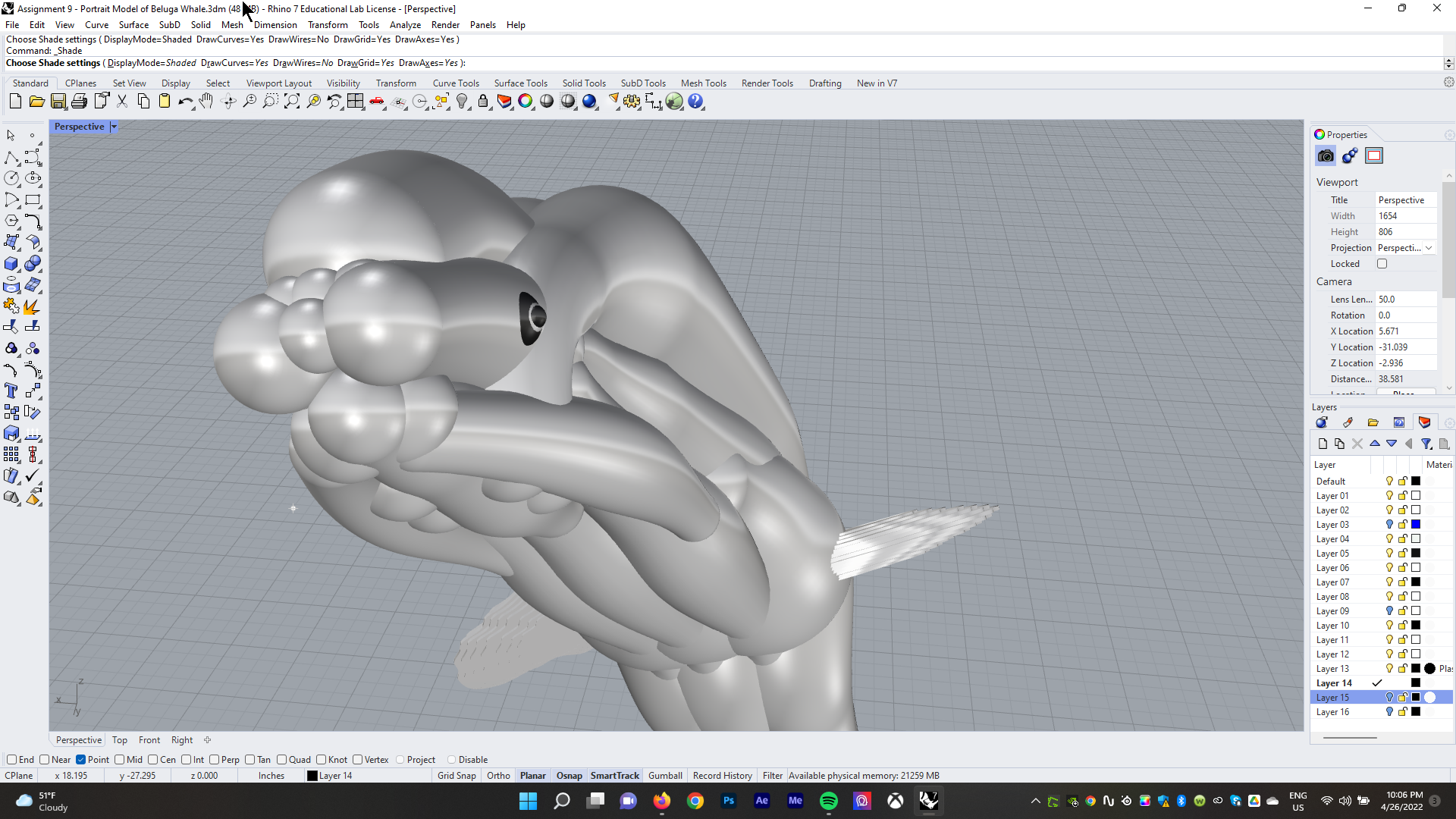
(6) After adding the final touches and polishing the model, I added a metallic material/texture to give it the feel of a metal balloon sculpture.
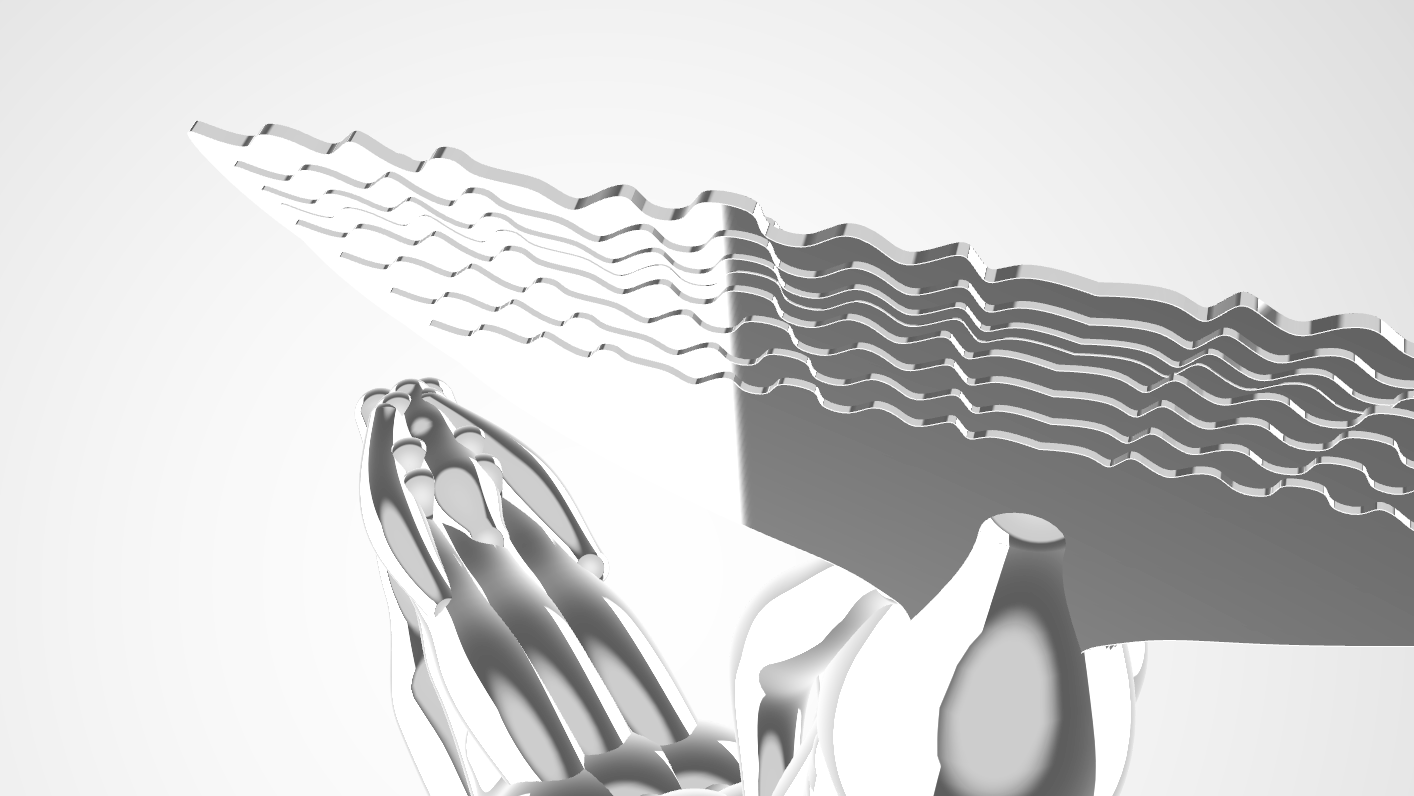

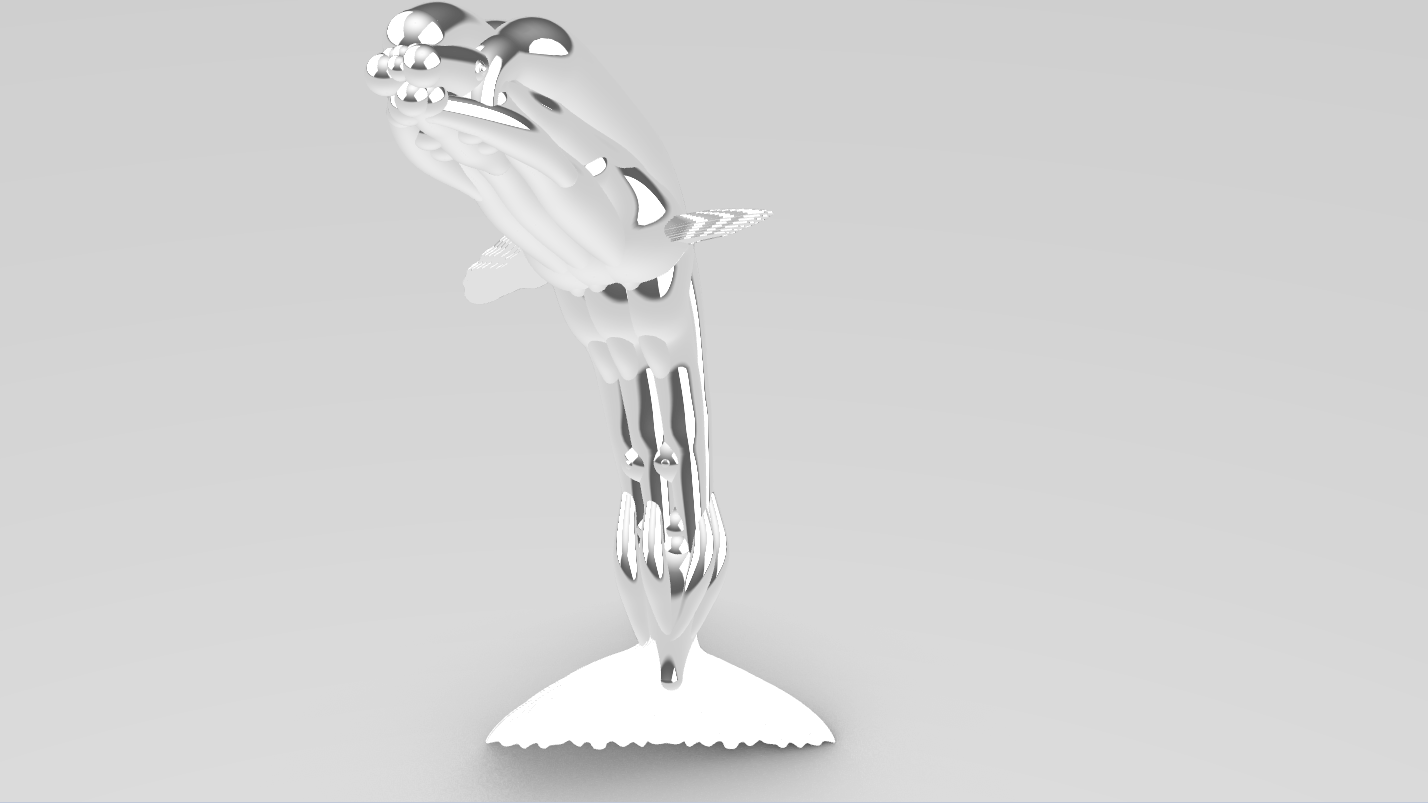
(7) Then, I experimented with additional textures and surfaces, such as the reflection of water.

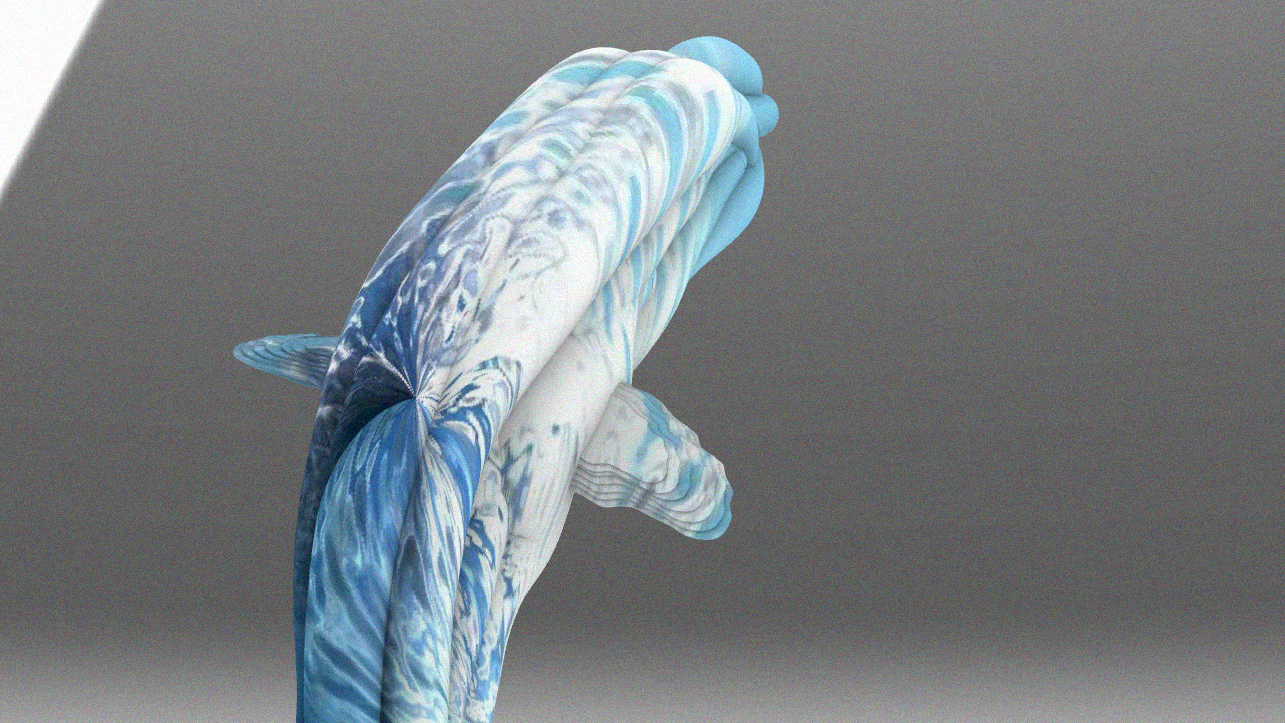

Lessons:
- CAD modeling using lofts, guide curves, sweep paths, pipes.
- Observing closely and sketching details to better understand the things we are trying to depict in CAD
- Leveraging aesthetics to create narratives around form and structure
- Adding materials and textures to 3D models as a way to explore digital materiality
- Rendering and applying principles of composition to engage audiences